Colleen Walsh in The Harvard Gazette:
 Marcus du Sautoy was around 13 when the exploits of a 19th-century German math genius changed his life. According to legend, the young Carl Friedrich Gauss was asked to calculate the sum of the numbers from one to 100, but instead of adding up the digits one by one, he realized 50 pairs of numbers (one plus 100, two plus 99, and so on) all equaled 101. So, he simply multiplied 50 times 101 and dropped the correct answer, 5,050, on his teacher’s desk.
Marcus du Sautoy was around 13 when the exploits of a 19th-century German math genius changed his life. According to legend, the young Carl Friedrich Gauss was asked to calculate the sum of the numbers from one to 100, but instead of adding up the digits one by one, he realized 50 pairs of numbers (one plus 100, two plus 99, and so on) all equaled 101. So, he simply multiplied 50 times 101 and dropped the correct answer, 5,050, on his teacher’s desk.
“When I heard this story,” said du Sautoy, “I thought, ‘Wow, that’s the subject I want to dedicate myself to.’”
Through teaching, TV appearances, and bestsellers, the Oxford professor of mathematics has done exactly that, bringing math and science to the masses. In an online Harvard Science Book Talk on Monday, du Sautoy, clad in a black shirt covered with white numbers, discussed his new book, “Thinking Better: The Art of the Shortcut in Math and Life,” with Melissa Franklin, Harvard’s Mallinckrodt Professor of Physics. The art of the shortcut isn’t about cutting corners, he emphasized. Instead, it’s about thinking cleverly about a problem to avoid the “boring work,” so you can “get to the work you want to do.” The book, he said, is a “celebration of mathematics,” as well as “a kind of interesting exploration of the shortcut beyond my world of maths.”
And many worlds there are. While researching his work, he interviewed experts in a range of fields. From an accomplished cellist he learned that scales are a kind of pattern, or shortcut, enabling musicians to play without analyzing each note. But he also learned that there’s no getting around the muscle memory required to master an instrument. “If you have to change the body physically in some way,” he said, “then it’s very hard to actually shortcut that.”
A mountaineer told du Sautoy that shortcuts occasionally come in handy, recalling a time when he triggered a small avalanche so he could quickly slip along the snow to avoid getting stuck on a summit at night. But more often, the climber took the long way up and down because he relished the views and “being in the moment.” The same is true for those who want to inhabit a piece of music, said the author. A song clip won’t immerse the listener in the work the way a full recording does. Conversely, a movie trailer might be “a useful shortcut to get a quick feel for what the film might be like,” he said.
More here.

 Even within a single patient with cancer, there is a vast diversity of individual tumor cells, which display distinct behaviors related to growth, metastasis, and responses to chemotherapy. To carry out these behaviors, each cancer cell uses its genes to make the needed molecules in a unique way known as its “gene expression signature.” To correlate gene expression signatures with cancer progression and chemotherapy resistance, a team of scientists led by Rong Lu from USC and Akil A. Merchant from Cedars-Sinai have introduced a new genetic technology in a study published in Nature Communications.
Even within a single patient with cancer, there is a vast diversity of individual tumor cells, which display distinct behaviors related to growth, metastasis, and responses to chemotherapy. To carry out these behaviors, each cancer cell uses its genes to make the needed molecules in a unique way known as its “gene expression signature.” To correlate gene expression signatures with cancer progression and chemotherapy resistance, a team of scientists led by Rong Lu from USC and Akil A. Merchant from Cedars-Sinai have introduced a new genetic technology in a study published in Nature Communications.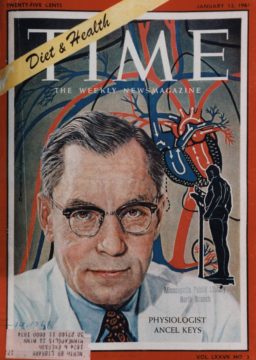 Landmark studies such as these laid the groundwork for the introduction of dietary guidelines in the United States and the United Kingdom during the 1970s and 1980s. The recommendations advised citizens to reduce their consumption of saturated fat to about 10% of their total energy intake, to lower cholesterol in the blood and therefore decrease the chances of a heart attack. In the public consciousness, a low-fat diet has been synonymous with good health ever since.
Landmark studies such as these laid the groundwork for the introduction of dietary guidelines in the United States and the United Kingdom during the 1970s and 1980s. The recommendations advised citizens to reduce their consumption of saturated fat to about 10% of their total energy intake, to lower cholesterol in the blood and therefore decrease the chances of a heart attack. In the public consciousness, a low-fat diet has been synonymous with good health ever since. To understand how a frumpy, mustard-coloured, short-handled purse, which may or may not be leather, sold at auction in February for a whopping $32,000, it’s helpful to wander back to ancient Greece. According to Herodotus, the 5th century tyrant Histiaeus was the first to shave the head of an illiterate servant, have his scalp tattooed with a message, allow time for the hair to grow back, then send the poor fellow out to his destination, where a second head shaving waited.
To understand how a frumpy, mustard-coloured, short-handled purse, which may or may not be leather, sold at auction in February for a whopping $32,000, it’s helpful to wander back to ancient Greece. According to Herodotus, the 5th century tyrant Histiaeus was the first to shave the head of an illiterate servant, have his scalp tattooed with a message, allow time for the hair to grow back, then send the poor fellow out to his destination, where a second head shaving waited.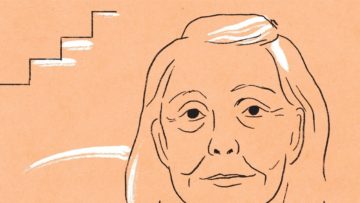 No woman could get away with it. Murdering her children is all she would ever be known for—ask Medea. Yet Herakles, often called by his Roman name, Hercules, is known for everything else: slaying the man-eating birds of the Stymphalian marsh, the multiheaded Lernaean Hydra, and the Nemean lion, with its Kevlar-strength fur; capturing the wild Erymanthian boar, the golden-antlered deer of Artemis, and the Minotaur’s father; stealing the girdle of Hippolyta, the golden apples from the garden of the Hesperides, the flesh-eating mares of Diomedes, and the red cattle of the giant Geryon; mucking the Augean stables in a single day; and kidnapping the three-headed dog Cerberus from Hades.
No woman could get away with it. Murdering her children is all she would ever be known for—ask Medea. Yet Herakles, often called by his Roman name, Hercules, is known for everything else: slaying the man-eating birds of the Stymphalian marsh, the multiheaded Lernaean Hydra, and the Nemean lion, with its Kevlar-strength fur; capturing the wild Erymanthian boar, the golden-antlered deer of Artemis, and the Minotaur’s father; stealing the girdle of Hippolyta, the golden apples from the garden of the Hesperides, the flesh-eating mares of Diomedes, and the red cattle of the giant Geryon; mucking the Augean stables in a single day; and kidnapping the three-headed dog Cerberus from Hades.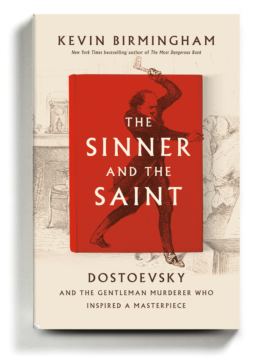 There’s nothing wrong, of course, with taking one’s Crime and Punishment neat, without footnotes, introduction or weighty biography, sans everything except Dostoevsky’s incandescent text (as recast by your pick of fourteen translators). Countless readers, and all good formalists, have done just that, not least because the old translations tended to have no notes. Why interrupt the spell, the morbid giddiness that overcomes the trusting reader almost as strongly as it does Rodion Raskolnikov, in whose garret and mind we perch throughout the most searing pages of the novel? What’s more, this is a book that many devour when they are roughly the same age as Dostoevsky’s murderer (twenty-three), if not several years younger. Raskolnikov, as we first meet him, is imprisoned by his internal, ever ‘relatable’ struggle with social conventions and family pressures, and his story is in one shocking sense a universal metaphor: we all have our crimes to commit. Who has time for footnotes if your main concern is to determine whether you are with the ‘Lycurguses, Solons, Muhammads, Napoleons’, with those who have the right to transgress and trample over others, or whether you are merely a ‘quivering creature’ or, still worse, a bookish ‘aesthetic louse’?
There’s nothing wrong, of course, with taking one’s Crime and Punishment neat, without footnotes, introduction or weighty biography, sans everything except Dostoevsky’s incandescent text (as recast by your pick of fourteen translators). Countless readers, and all good formalists, have done just that, not least because the old translations tended to have no notes. Why interrupt the spell, the morbid giddiness that overcomes the trusting reader almost as strongly as it does Rodion Raskolnikov, in whose garret and mind we perch throughout the most searing pages of the novel? What’s more, this is a book that many devour when they are roughly the same age as Dostoevsky’s murderer (twenty-three), if not several years younger. Raskolnikov, as we first meet him, is imprisoned by his internal, ever ‘relatable’ struggle with social conventions and family pressures, and his story is in one shocking sense a universal metaphor: we all have our crimes to commit. Who has time for footnotes if your main concern is to determine whether you are with the ‘Lycurguses, Solons, Muhammads, Napoleons’, with those who have the right to transgress and trample over others, or whether you are merely a ‘quivering creature’ or, still worse, a bookish ‘aesthetic louse’?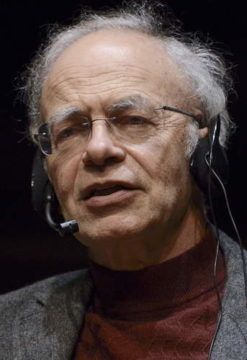 Peter Singer: I think utilitarianism—far from being a kind of dry economic science or anything like that—is actually a reforming impulse. That goes back a long way before Jeremy Bentham, but was certainly made explicit by Bentham. Bentham and [later] utilitarians have been against slavery, they’ve been for women’s rights. They’ve been for the rights of gay people long before anybody else dared to even talk about that. They’ve been against cruelty to animals. They’ve been for prison reform. There’s a long list of things that utilitarians have been trying to reduce the amount of suffering in relation to and I’m very happy to be part of that tradition and to think of utilitarianism not merely as something for philosophers to talk about, but something that motivates people to act.
Peter Singer: I think utilitarianism—far from being a kind of dry economic science or anything like that—is actually a reforming impulse. That goes back a long way before Jeremy Bentham, but was certainly made explicit by Bentham. Bentham and [later] utilitarians have been against slavery, they’ve been for women’s rights. They’ve been for the rights of gay people long before anybody else dared to even talk about that. They’ve been against cruelty to animals. They’ve been for prison reform. There’s a long list of things that utilitarians have been trying to reduce the amount of suffering in relation to and I’m very happy to be part of that tradition and to think of utilitarianism not merely as something for philosophers to talk about, but something that motivates people to act. As the holidays approach, we are being reminded of the fragility of the global supply chain. But at the same time, the supply chain itself is a truly impressive and fascinating structure, made as it is from multiple components that must work together in synchrony. From building an item in a factory and shipping it worldwide to transporting it locally, processing it in a distribution center, and finally delivering it to an address, the system is simultaneously awe-inspiring and deeply dehumanizing. I talk with Christopher Mims about how things are made, how they get to us, and what it all means for the present and future of our work and our lives.
As the holidays approach, we are being reminded of the fragility of the global supply chain. But at the same time, the supply chain itself is a truly impressive and fascinating structure, made as it is from multiple components that must work together in synchrony. From building an item in a factory and shipping it worldwide to transporting it locally, processing it in a distribution center, and finally delivering it to an address, the system is simultaneously awe-inspiring and deeply dehumanizing. I talk with Christopher Mims about how things are made, how they get to us, and what it all means for the present and future of our work and our lives. Epistemology, the philosophical study of knowledge, belief and evidence, starts here, with our fallibility. And from this beginning, there are many paths for epistemology to take, and many sorts of questions to set us down these trails.
Epistemology, the philosophical study of knowledge, belief and evidence, starts here, with our fallibility. And from this beginning, there are many paths for epistemology to take, and many sorts of questions to set us down these trails. Marcus du Sautoy was around 13 when the exploits of a 19th-century German math genius changed his life. According to legend, the young Carl Friedrich Gauss was asked to calculate the sum of the numbers from one to 100, but instead of adding up the digits one by one, he realized 50 pairs of numbers (one plus 100, two plus 99, and so on) all equaled 101. So, he simply multiplied 50 times 101 and dropped the correct answer, 5,050, on his teacher’s desk.
Marcus du Sautoy was around 13 when the exploits of a 19th-century German math genius changed his life. According to legend, the young Carl Friedrich Gauss was asked to calculate the sum of the numbers from one to 100, but instead of adding up the digits one by one, he realized 50 pairs of numbers (one plus 100, two plus 99, and so on) all equaled 101. So, he simply multiplied 50 times 101 and dropped the correct answer, 5,050, on his teacher’s desk.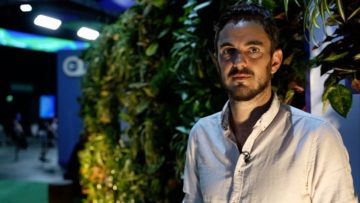 Prof Crowther, who grew up in Prestatyn, Flintshire, is a professor of ecosystem ecology at ETH Zurich University in Switzerland and also chairs an advisory board for the United Nations on nature restoration. He warned blanket planting of trees was “hugely threatening”. “This is not about offsetting your guilt, that would be an absolutely devastating step for climate change,” he said. Speaking at
Prof Crowther, who grew up in Prestatyn, Flintshire, is a professor of ecosystem ecology at ETH Zurich University in Switzerland and also chairs an advisory board for the United Nations on nature restoration. He warned blanket planting of trees was “hugely threatening”. “This is not about offsetting your guilt, that would be an absolutely devastating step for climate change,” he said. Speaking at  Until recently, Fran Lebowitz was not well known in Britain. The release this year of Martin Scorsese’s Netflix series Pretend It’s a City, however, has made her something of a household name here. A veritable Franbase has now formed in the UK, giving rise to online appearances, a tour scheduled for next year and the first publication in this country of The Fran Lebowitz Reader (which was originally published in the United States in 1994). The Lebowitz on the dust jacket is one fans of the series will recognize: the seasoned New Yorker with gorgeous overcoat, horn-rimmed sunglasses and cigarette, as famous for her writer’s block as for her wit. Between the covers, we meet the artist as a young woman. The Reader reproduces her only two essay collections: Metropolitan Life (1978) and Social Studies (1981), which in turn reproduce her magazine pieces of that era.
Until recently, Fran Lebowitz was not well known in Britain. The release this year of Martin Scorsese’s Netflix series Pretend It’s a City, however, has made her something of a household name here. A veritable Franbase has now formed in the UK, giving rise to online appearances, a tour scheduled for next year and the first publication in this country of The Fran Lebowitz Reader (which was originally published in the United States in 1994). The Lebowitz on the dust jacket is one fans of the series will recognize: the seasoned New Yorker with gorgeous overcoat, horn-rimmed sunglasses and cigarette, as famous for her writer’s block as for her wit. Between the covers, we meet the artist as a young woman. The Reader reproduces her only two essay collections: Metropolitan Life (1978) and Social Studies (1981), which in turn reproduce her magazine pieces of that era.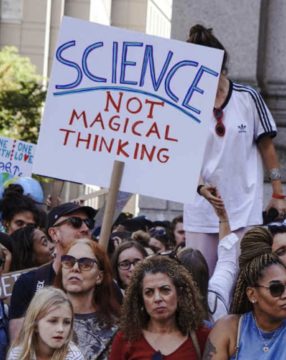 It’s been more than
It’s been more than With the publication in the United States of his best-selling “Sapiens” in 2015, the Israeli historian and philosopher Yuval Noah Harari arrived at the top rank of public intellectuals, a position he consolidated with “Homo Deus” (2017) and “21 Lessons for the 21st Century” (2018). Harari’s key theme is the idea that human society has largely been driven by our species’s capacity to believe in what he calls fictions: those things whose power is derived from their existence in our collective imaginations, whether they be gods or nations; our belief in them allows us to cooperate on a societal scale. The broad sweep of Harari’s writing, which encompasses the prehistoric past and a dark far-off future, has turned him into a bit of a walking inkblot test. “The general misunderstandings of me,” says Harari, 45, co-author of the recently published “Sapiens: A Graphic History, Volume 2” (the latest in a series of graphic-novel adaptations of his work), “are that I’m the prophet of doom and then there’s this opposite view that I think everything is wonderful.” Both, of course, might be true. “Once the books are out, the ideas are out of your hands,” he says.
With the publication in the United States of his best-selling “Sapiens” in 2015, the Israeli historian and philosopher Yuval Noah Harari arrived at the top rank of public intellectuals, a position he consolidated with “Homo Deus” (2017) and “21 Lessons for the 21st Century” (2018). Harari’s key theme is the idea that human society has largely been driven by our species’s capacity to believe in what he calls fictions: those things whose power is derived from their existence in our collective imaginations, whether they be gods or nations; our belief in them allows us to cooperate on a societal scale. The broad sweep of Harari’s writing, which encompasses the prehistoric past and a dark far-off future, has turned him into a bit of a walking inkblot test. “The general misunderstandings of me,” says Harari, 45, co-author of the recently published “Sapiens: A Graphic History, Volume 2” (the latest in a series of graphic-novel adaptations of his work), “are that I’m the prophet of doom and then there’s this opposite view that I think everything is wonderful.” Both, of course, might be true. “Once the books are out, the ideas are out of your hands,” he says. The pain struck suddenly in Venice.
The pain struck suddenly in Venice.